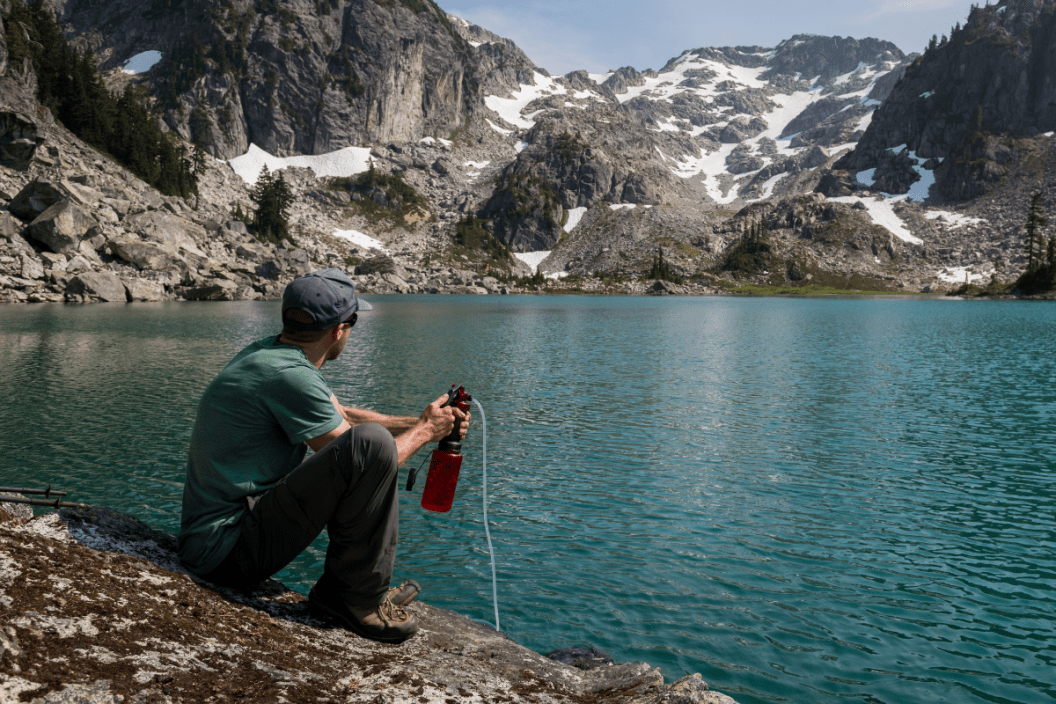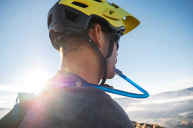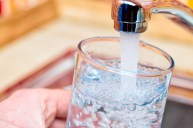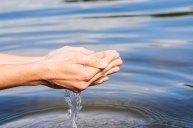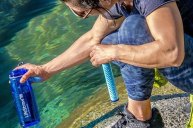Have you ever heard of beaver fever? It's what happens when someone drinks water contaminated with giardia. Giardia is a microscopic parasite that causes diarrhea in humans. Although giardiasis usually goes away, those explosive side effects may last for weeks. Weeks! I don't think you need another reason to know why it's important to know backcountry water purification before drinking from a wild water source.
Purification makes water potable. Water purification protects you from giardia and keeps you safe from other bacteria, viruses, pollutants, cryptosporidiosis (which I've experienced and would not recommend), large particles, and other floaties in nonpotable water. It involves filtering and disinfecting natural water. Here's a deep dive into the best backcountry water purification strategies.
Backcountry Water Purification Strategies
Collecting Water
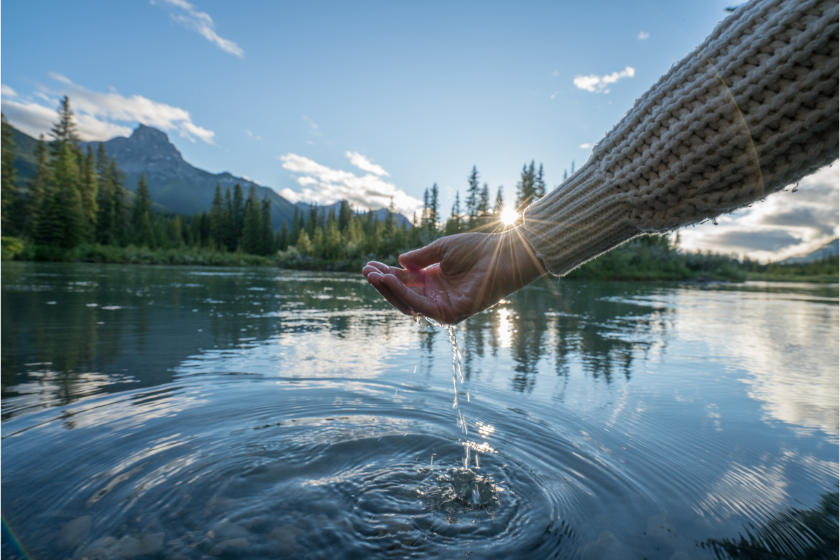
swissmediavision via Getty Images
There are a few things to know when collecting naturally occurring water, like using a clean container when getting water from its source. It's also recommended to wash or sanitize your hands before handling water. When choosing your water, select a spot at a higher elevation, closest to the actual source, away from frequently visited campsites, and away from where animals have been grazing. Sites like those assure you that your chosen water is as clean as possible.
Although it's easy to snag water from ponds and lakes, selecting from moving water is preferred. Stagnant, standing water is where insects, bacteria, and viruses love to breed. If you must gather water from a still source, shoot for the top few inches of the body of water. Dip your container slightly below the surface and fill from there.
Boiling Water
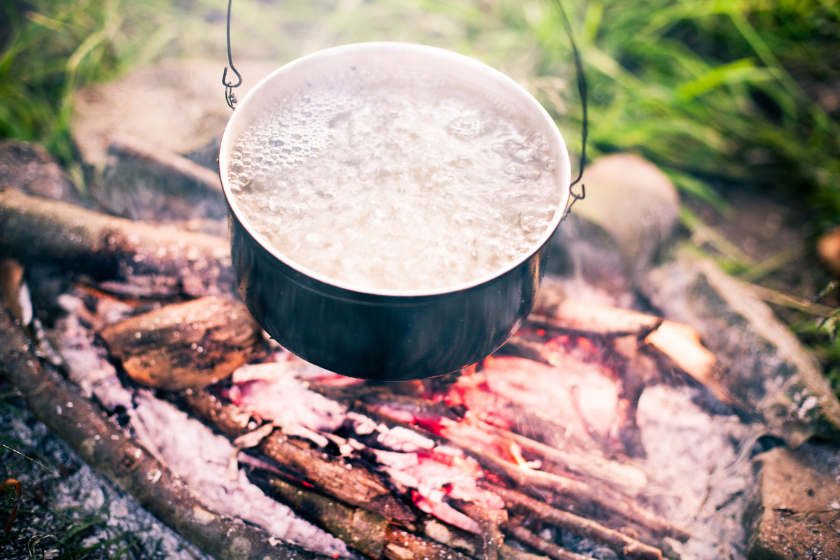
DIMUSE via Getty Images
This is probably a water purification technique you're familiar with. Bringing water up to 212 degrees Fahrenheit for a few minutes destroys the most harmful contaminants in water. This method offers no filtration; boiling merely disinfects water. It's essential to filter water before boiling it. If the water you're cleaning is muddy, sandy, full of pine needles, or came from an elk wallow, you'll likely find some unpleasant flavors and textures present in your disinfected water.
Water takes less energy to boil at high elevations. However, it would also help if you boiled water longer at high peaks. If you're above 6,500 feet above sea level, bring water to a rolling boil for at least three minutes before drinking it. If you're under 6,500 feet, you can boil it for one minute.
Iodine and Chlorine Tablets
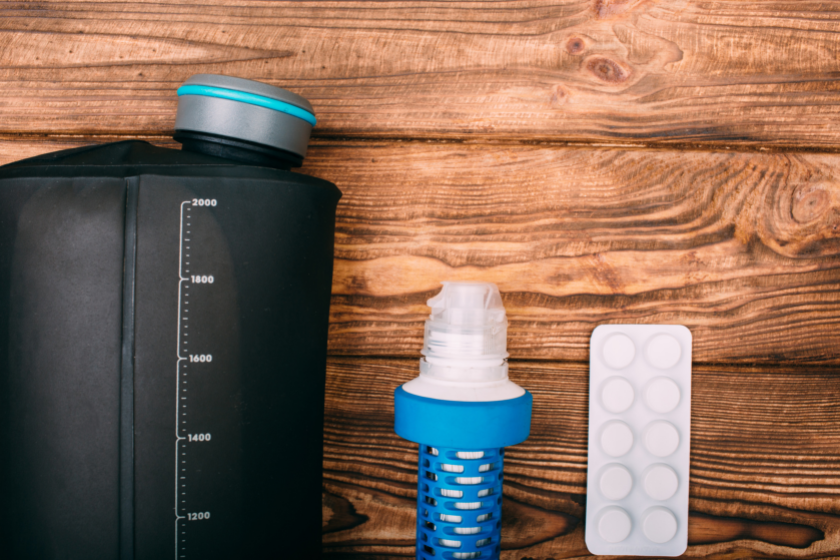
peakSTOCK via Getty Images
Similar to boiling water, iodine and chlorine tablets don't filter water. They disinfect it. Chemical tablets or drops are common ways to disinfect water. The agents most brands use are either iodine or chlorine dioxide. Depending on the amount of time these chemicals are in contact with waterborne organisms, they are effective at killing them off, thereby disinfecting your water.
Note that chemical disinfection can take a long time. Usually, tablets and drops take 30 minutes to a few hours to disinfect your water. However, tablets and drops are super lightweight and very backpack-friendly.
UV Light Purification
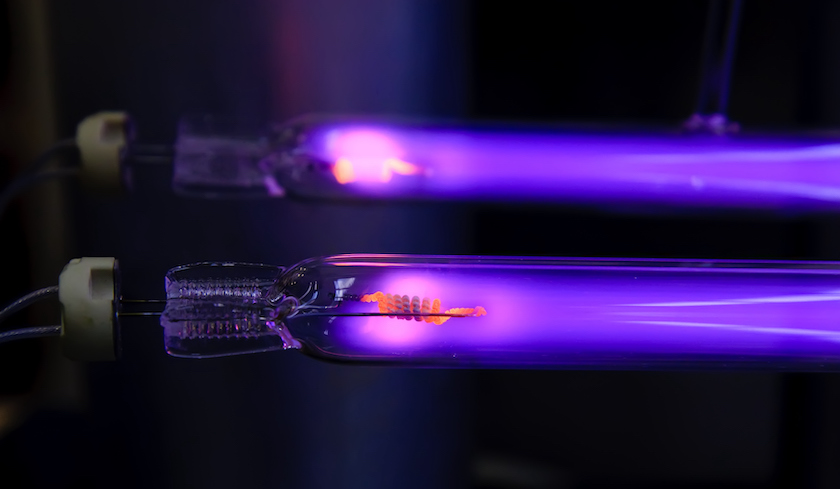
Victor Borisov via Getty Images
Another standard disinfection method, UV light purification, involves using a battery-powered light and shining it into your water. When used correctly, this method can keep you safe from bacteria, viruses, and parasites.
Although these look cool, this method is reliant on batteries, clear water, and the correct amount of contact time with waterborne organisms. Those particles may shield harmful microorganisms from the light if your water is not clear. Additionally, the light will be too weak to kill microorganisms if the battery gets too low.
Water Filtration

CasarsaGuru via Getty Images
All kinds of filters are available for you to try regarding water filtration. No matter which type of filter you use, filters effectively remove large particles like leaves, sand, dirt, and silt. They can also remove fine particles that cloud your water or float around.
Not all filters are effective at removing viruses. However, if your filter has an absolute pore size less than or equal to a one-micron filter, it can remove cryptosporidium and giardia. This is an NSF Standard 53 or 58-rated cyst and oocyst reduction/removal filter.
It's also essential to follow the manufacturer's instructions regarding filter upkeep. Filters usually require cleaning or replacement over time. Most filters are no longer effective once they expire or are full of gunk after years of use.
The Best Water Filter Options
As previously mentioned, there's a wide variety of water filters. One of the most common products is a gravity filter. These are pretty self-explanatory; the pull of gravity is used to carry water across a filter. Most products include two large bags with a hose running between them. The dirty water bag gets hung from a tree, camper, rope, or other elevated location, and the clean water bag sits on the ground below. Gravity pulls the dirty water down through the hose, through the filter, and into the clean water bag.
Pump filters are similar to gravity filters. However, you use energy instead of gravity to move water across a filter. Drop the filter's intake hose into your water source. Then, drop the outtake hose into your water bottle. Using your hands, the pump forces water through the filter and into your water bottle. These kinds of filters require some backcountry cleaning and physical exertion. They can also be a little heavy in your backpack.
My personal favorite, water bottle filters, are convenient and portable. Grayl is one product that I don't leave my house without. It consists of two cups nested inside each other with a filter between them. I removed the outer cup and filled it with water to use it. Then, I reinsert the inner cup into the outer one, taking about eight seconds to press the water through the filter on the bottom of the inner cup. Lastly, I pop the lid back on and have 24 ounces of filtered water waiting for me.
Other types of water filters include straw and squeeze filters. Sometimes, a squeeze filter can double as a straw filter, too. It depends on whether your product has a detachable straw element that connects to a squeeze bag. Products like LifeStraw are handy, especially in emergencies, because they let you drink directly from a water source. However, they offer no water storage, only filters for one person at a time, and often don't have replaceable parts.
Water filtration and purification systems are generally found in any outdoor shop. However, I recommend checking your local outdoor gear shop before perusing the shelves at big box stores. Those folks will likely be able to give you great recommendations, and will want to hear about your well-hydrated outdoor adventures when you return from your trips.
